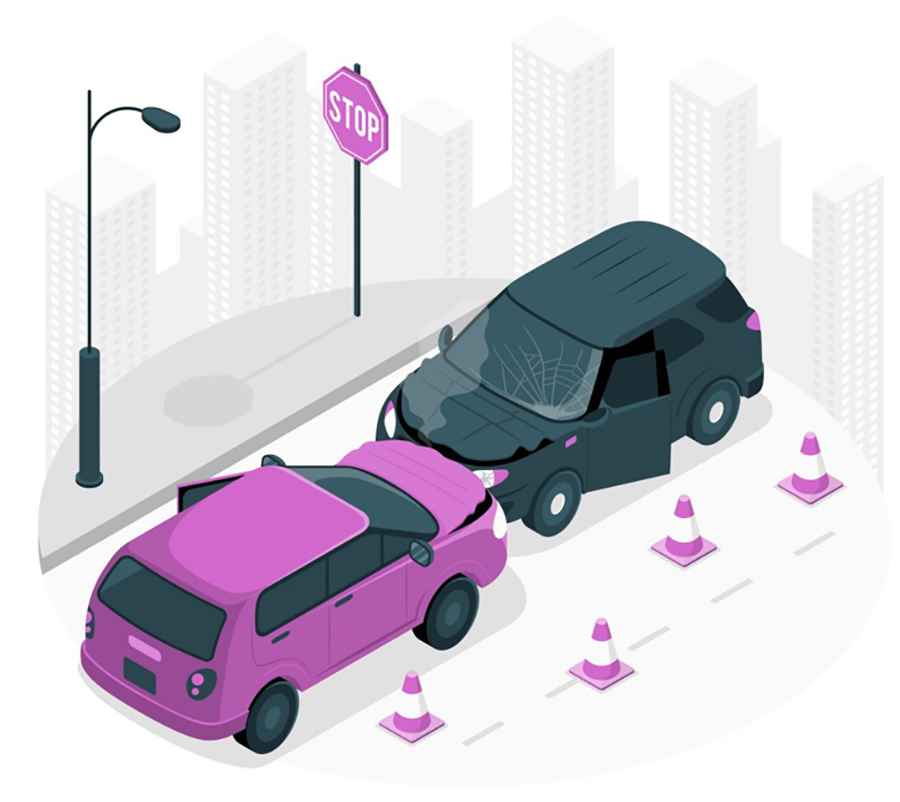5 Things You Should Immediately Do Following a Head-on Car Collision in the USA
Head-on collisions are some of the worst accidents you can ever find yourself in. It goes from bad to worse if a car rams into a bigger vehicle, like a truck or tractor. An Insurance Information Institute report states that 3,631 people lost their lives in head-on collisions in 2020. You know it’s serious when a particular type of accident accounts for 10% of all fatalities in a year.

Awareness is the only way to tackle head-on collisions. Once you learn more about head-on car collisions, you’ll understand how to take preventive measures.
What is a head-on collision?
A head-on collision is a type of accident where two vehicles ram each other directly in the front when moving in opposite directions. Another variation of a head-on collision is when a vehicle strikes a stationary object or a parked vehicle. Head-on collisions are seldom minor, as they develop a huge amount of force.
Head-on collisions – causes
Driver error is almost always the reason for head-on collisions. Listed below are some of the ways in which a head-on collision occurs.
- Distracted driving
- Driving while under the influence of alcohol or drugs
- Fatigued driving
- Poor passing techniques
- Driver confusion
- Reckless driving
There are also instances where a head-on collision occurs when a driver tries to avoid an obstacle (a pedestrian, another vehicle, or other obstructions) and ends up crashing into another vehicle.
It is important to know what to do when you are involved in a head-on collision. Given below are five important things to keep in mind after a head-on collision.
- Call 911
This must be a priority, not just after a head-on collision but after any accident. Immediately after an accident, you must stay at the scene and call 911. The staying at the scene part is important. Leaving before the authorities arrive puts you in the hit-and-run category.
Calling 911 notifies the authorities that an accident has happened. The 911 operator will share your accident details with the police department or a hospital, depending on the seriousness of the accident.
Calling 911 gets you medical assistance and alerts the local police department. Both are vital when filing a car accident claim. The officer who arrives at the scene will draft a police report that legitimizes the accident. The ambulance, on the other hand, helps treat injuries and diagnose hidden ones.
- Exchange information and gather evidence
This is the second step since it is important to find out who is at fault in a head-on collision. If possible, collect information about the other driver. This includes
- The driver’s name
- The driver’s contact details
- The driver’s license information
- The driver’s insurance details
Once you have collected sufficient information from the driver, it’s time to gather evidence. Pull out your smartphone and snap pictures of everything you think is related to the accident. This can be anything from the following list.
- Make and model of all the cars involved
- License plate numbers
- Your injuries
- Tire marks
- Traffic signals
- Signs of environmental destruction (if any)
Also, don’t forget witnesses. Talk with them and collect testimonies. If possible, collect their contact information and ask for their willingness to testify for you.
- Alert the concerned authorities
You now have a police report, information about the drivers involved, and photographs of the accident. It’s time to get in touch with the concerned authorities. This is usually
- Your car’s insurance company
- The Department of Motor Vehicles (DMV)
You must call your insurance company to inform them that your car has been in an accident. Read through your policy to find out the time period available. Reporting at the earliest possible time is important, as your insurance company will launch an investigation of its own.
In addition to a police report, some states require individuals to file an accident report with the local DMV. Each state has specific criteria when it comes to reporting an accident to the DMV. Check with the local laws to find out yours.
- Keep records safely
With most of the difficult part done, the next step is record safekeeping. You will have bundles and bundles of paperwork. This can be anything like
- Doctor statements
- Prescriptions
- Bills to repair car
- Therapy recommendations
- Taxi charges for hospital visits
- Bills for home modifications
- Police report
- Evidence gathered
It is important to safely store all these documents. They will be vital in processing your car accident claim.
- Hire a lawyer
Though it is the final step, hiring a lawyer comes right behind calling 911 in terms of importance. You need a lawyer to handle your car accident claim. You cannot manage this alone, no matter how much of a legal expert you think you are.
A car accident lawyer will know how to keep an insurance adjuster at bay. This insurance adjuster will trick you into accepting a lowball offer if you don’t have a lawyer. Remember, the insurance company and anyone related to it are in this business for the money, nothing else.
The lawyer will also consider all the losses you have suffered and calculate a compensation that’s perfect for them.
You just read a simple guide on what a head-on collision is and what to do when you’re involved in one. Although safe driving habits are your best friend, a little knowledge of accident do’s and don’ts doesn’t hurt. So buckle your seat belts and have a safe journey. And if you’re drunk, be a responsible citizen and call a cab.
Image credit: Imagesource